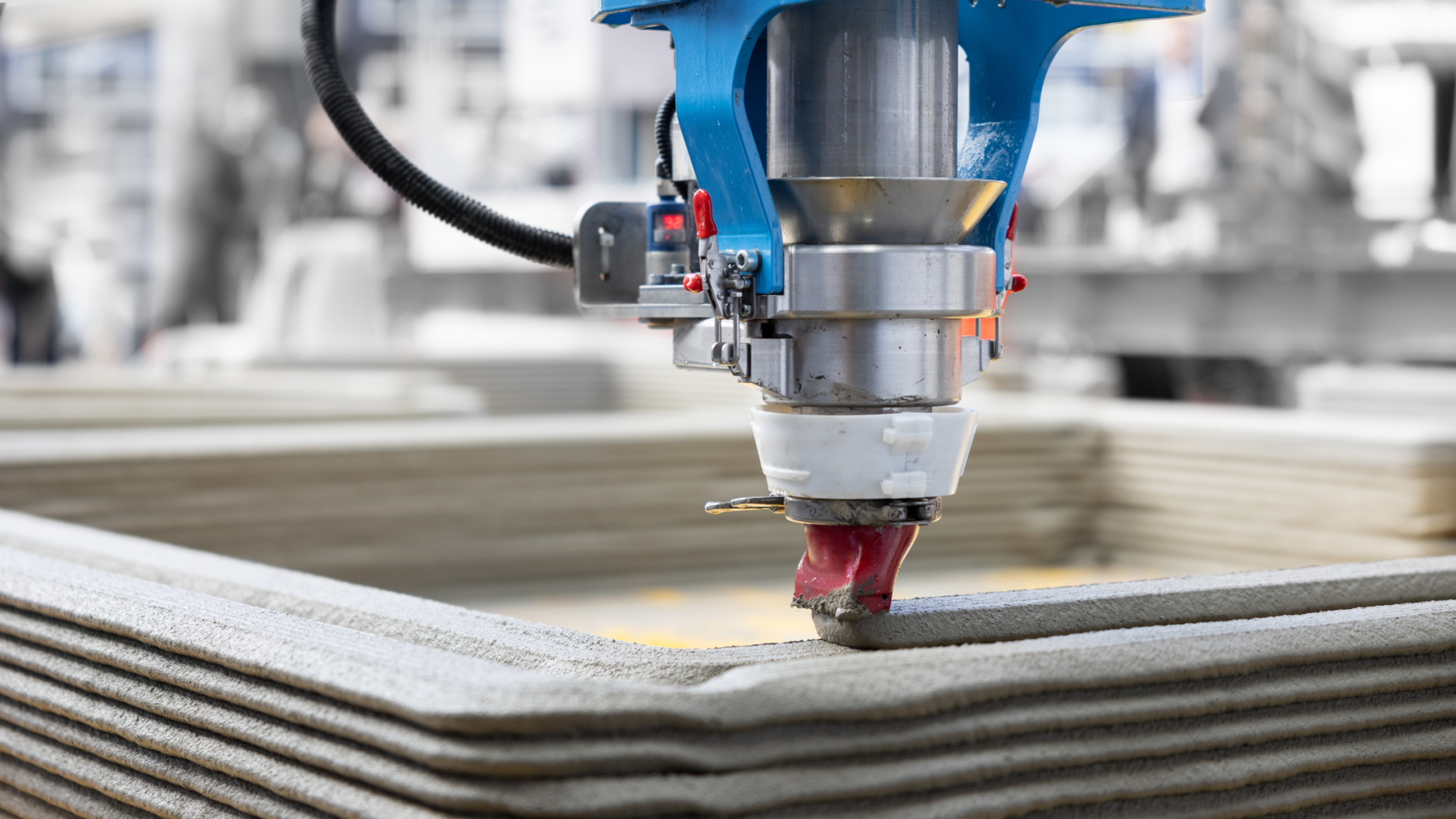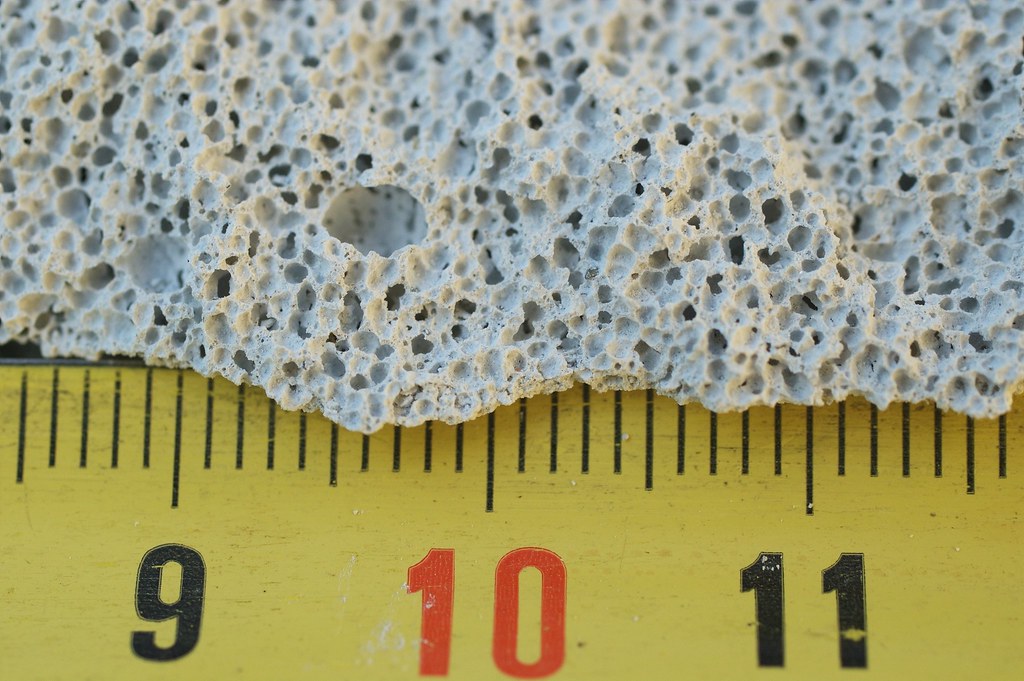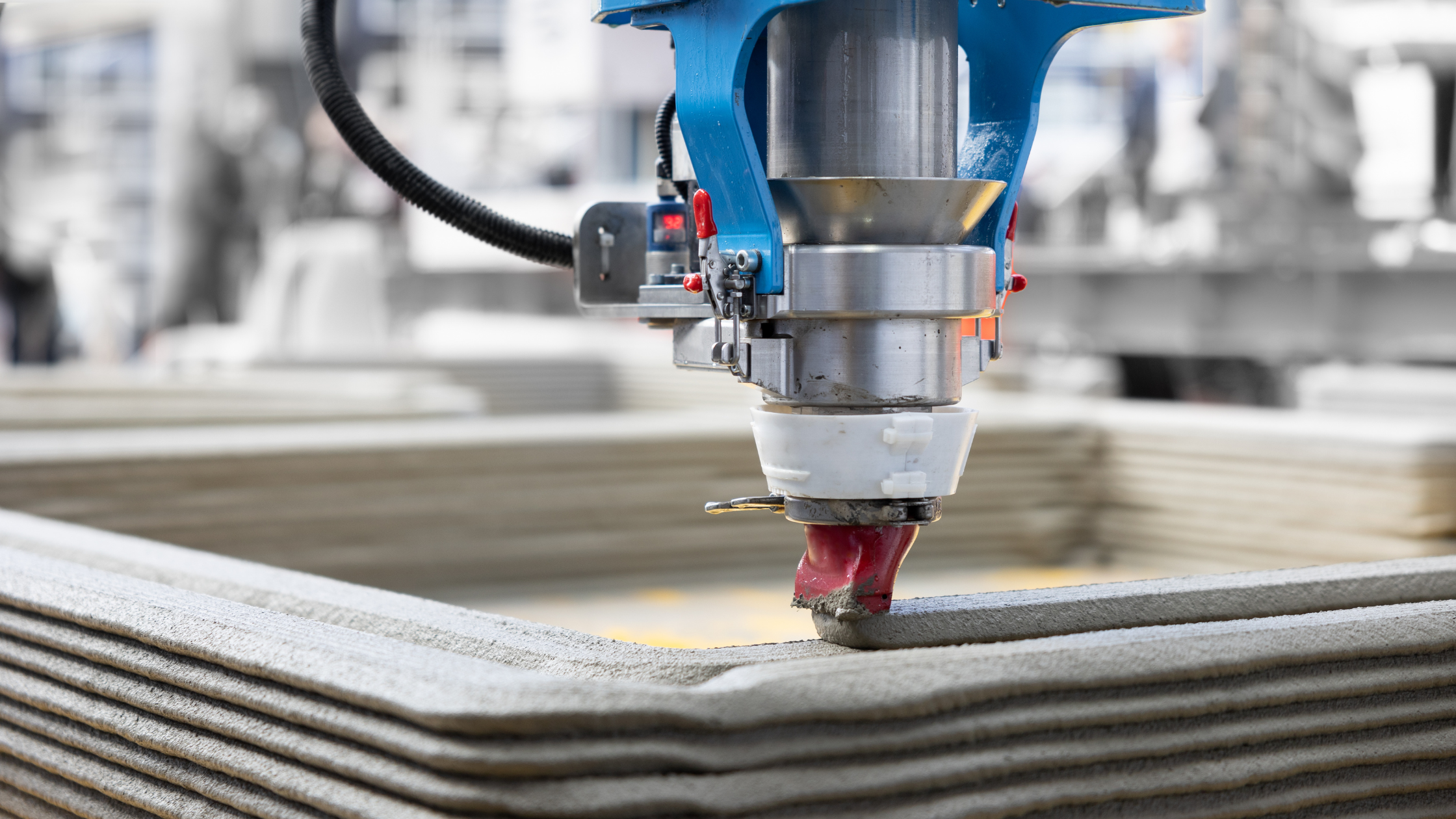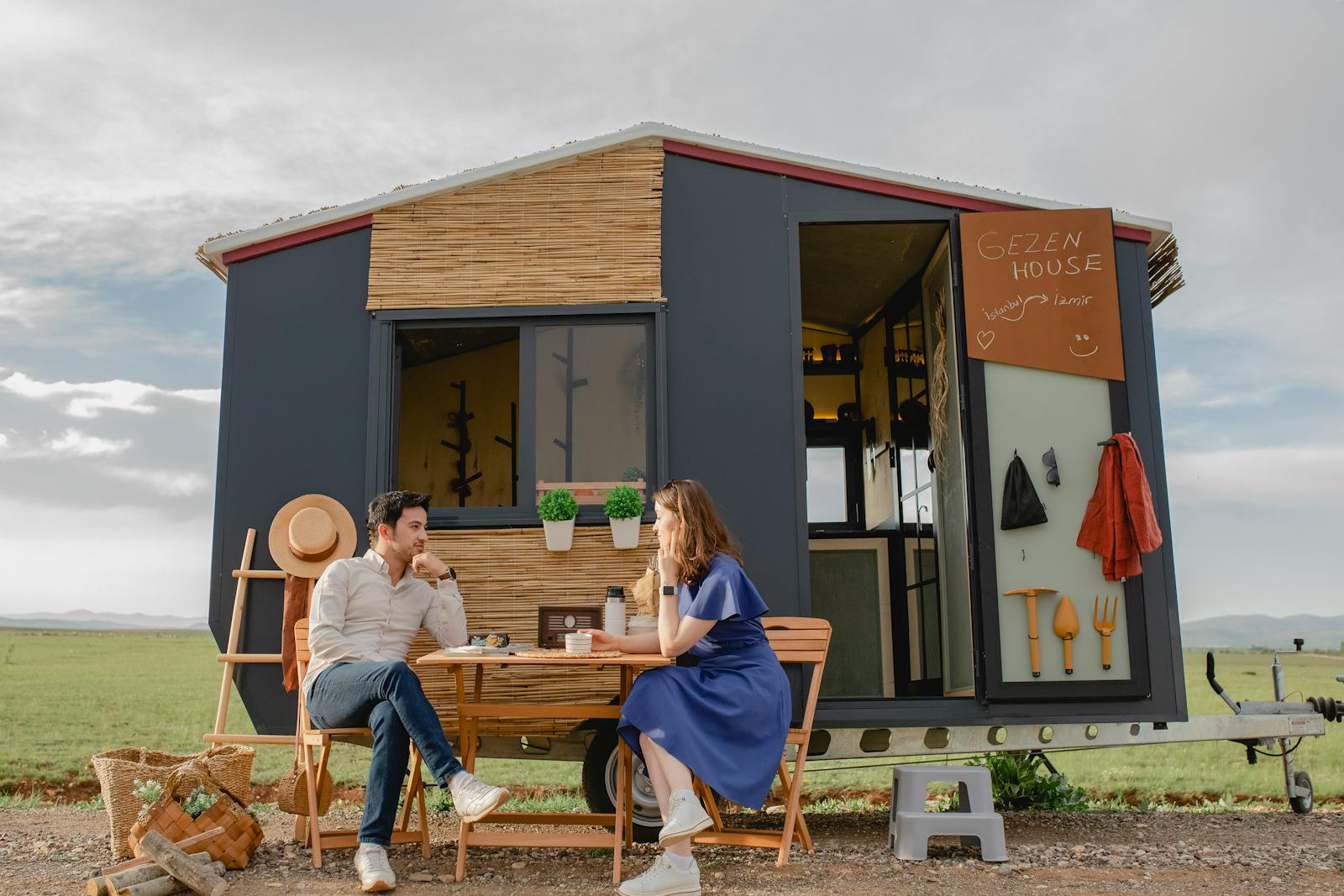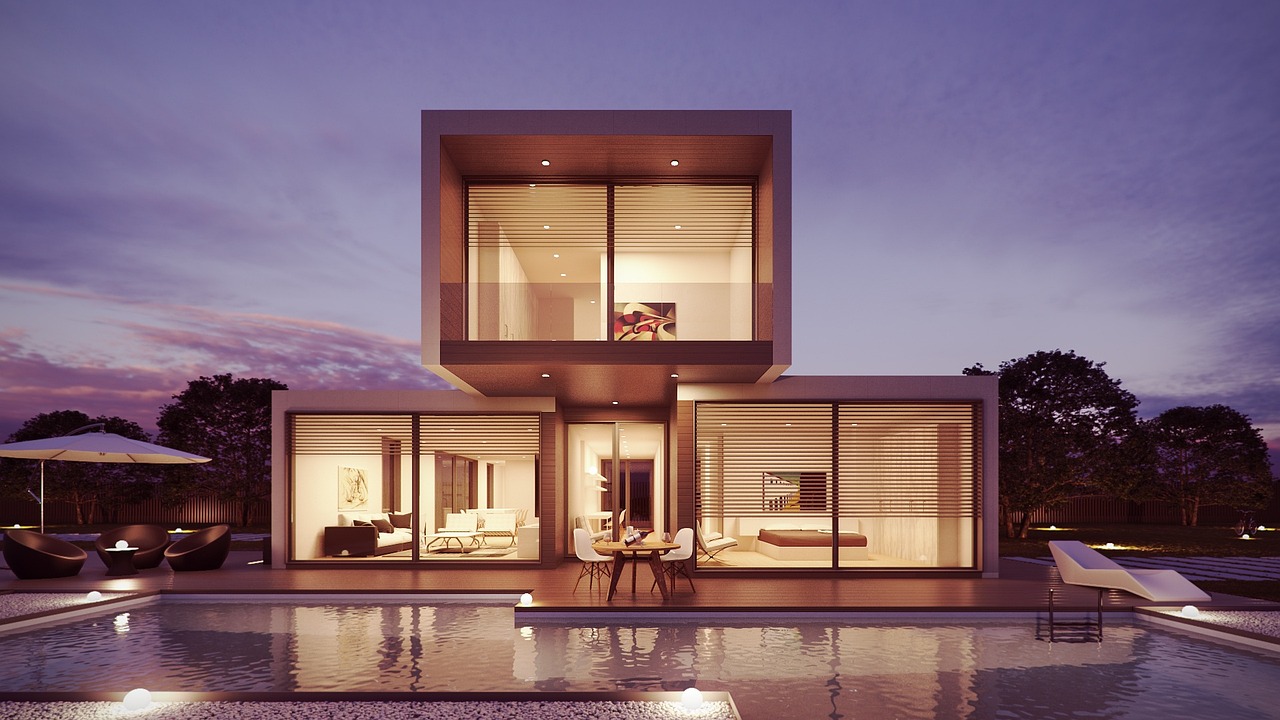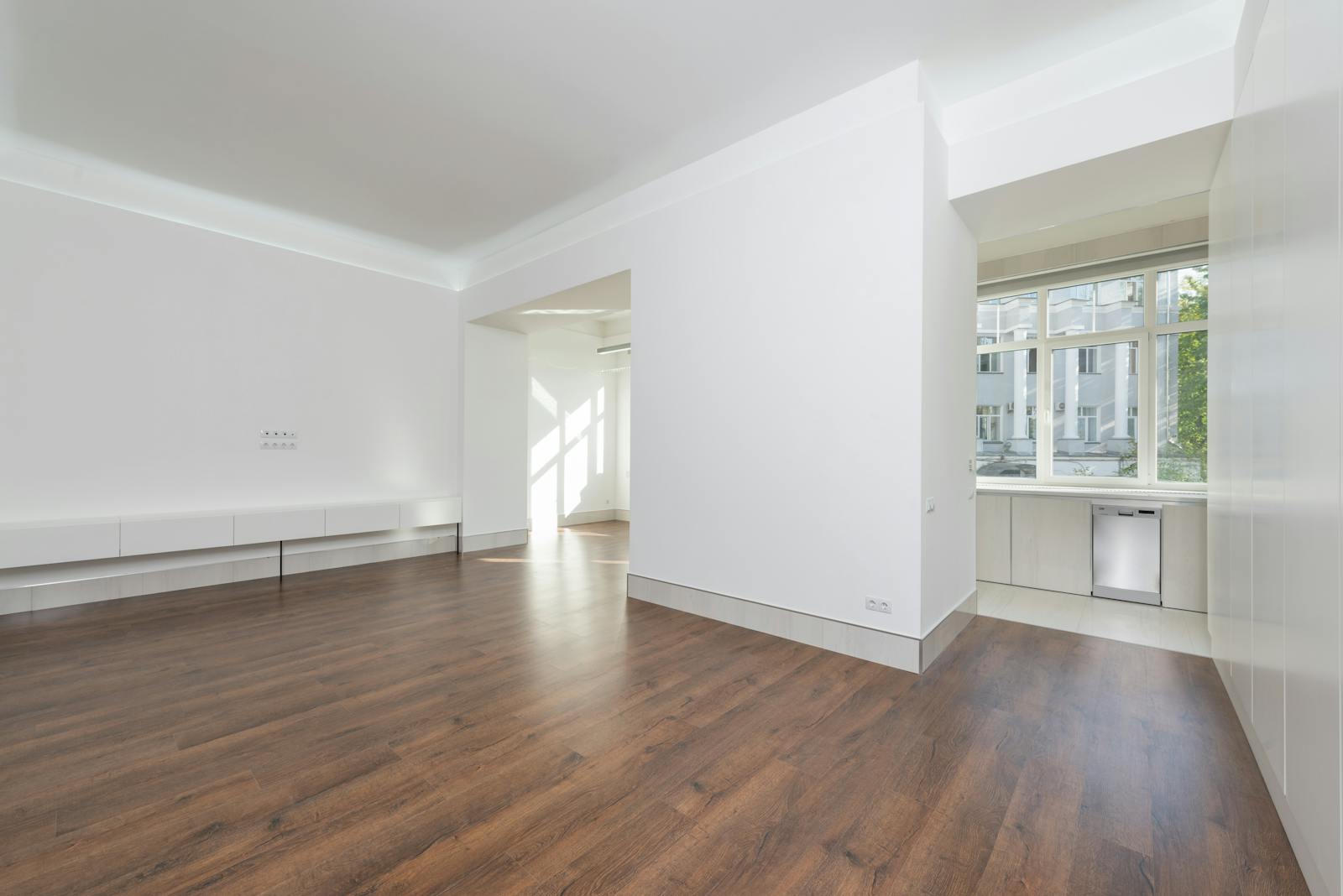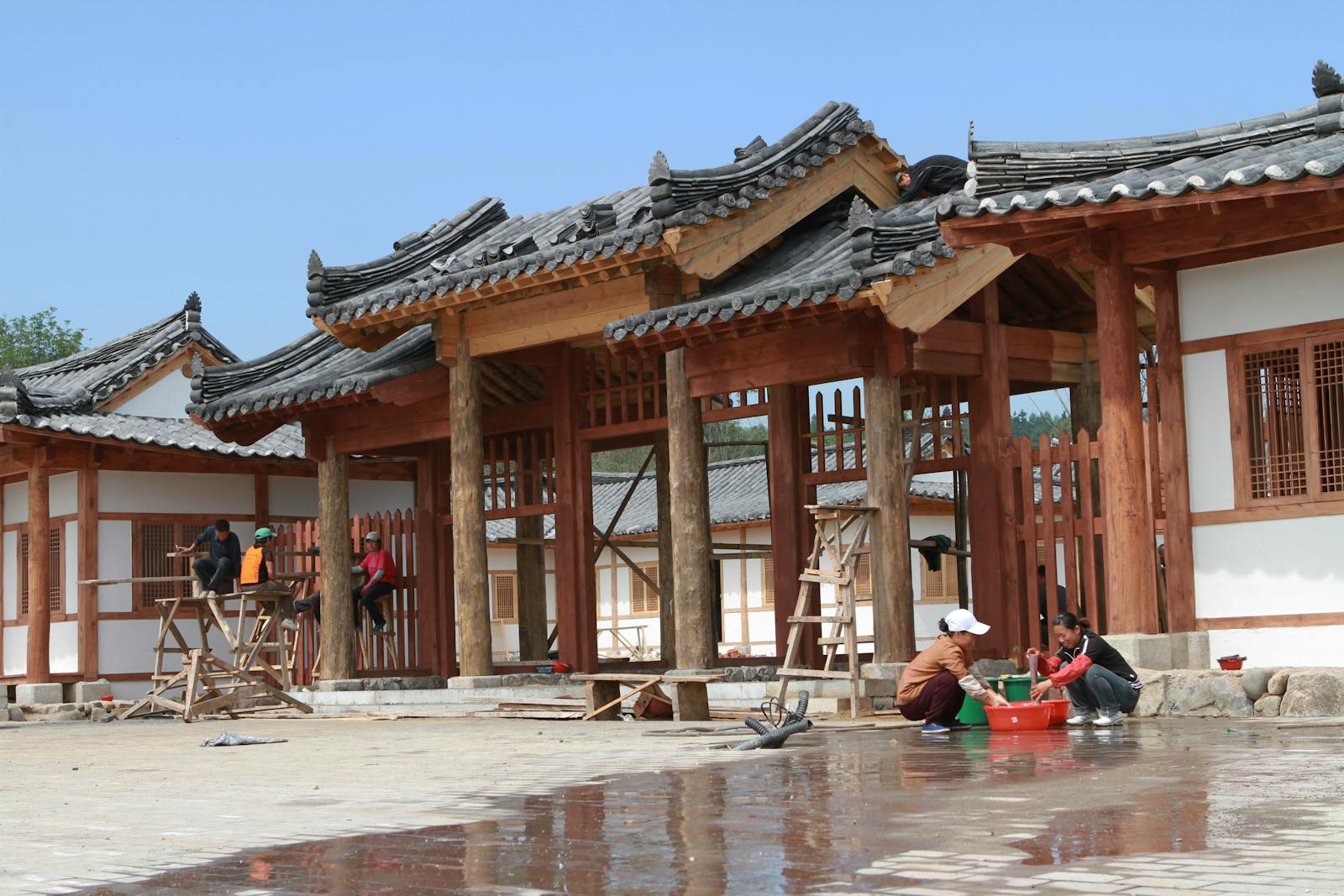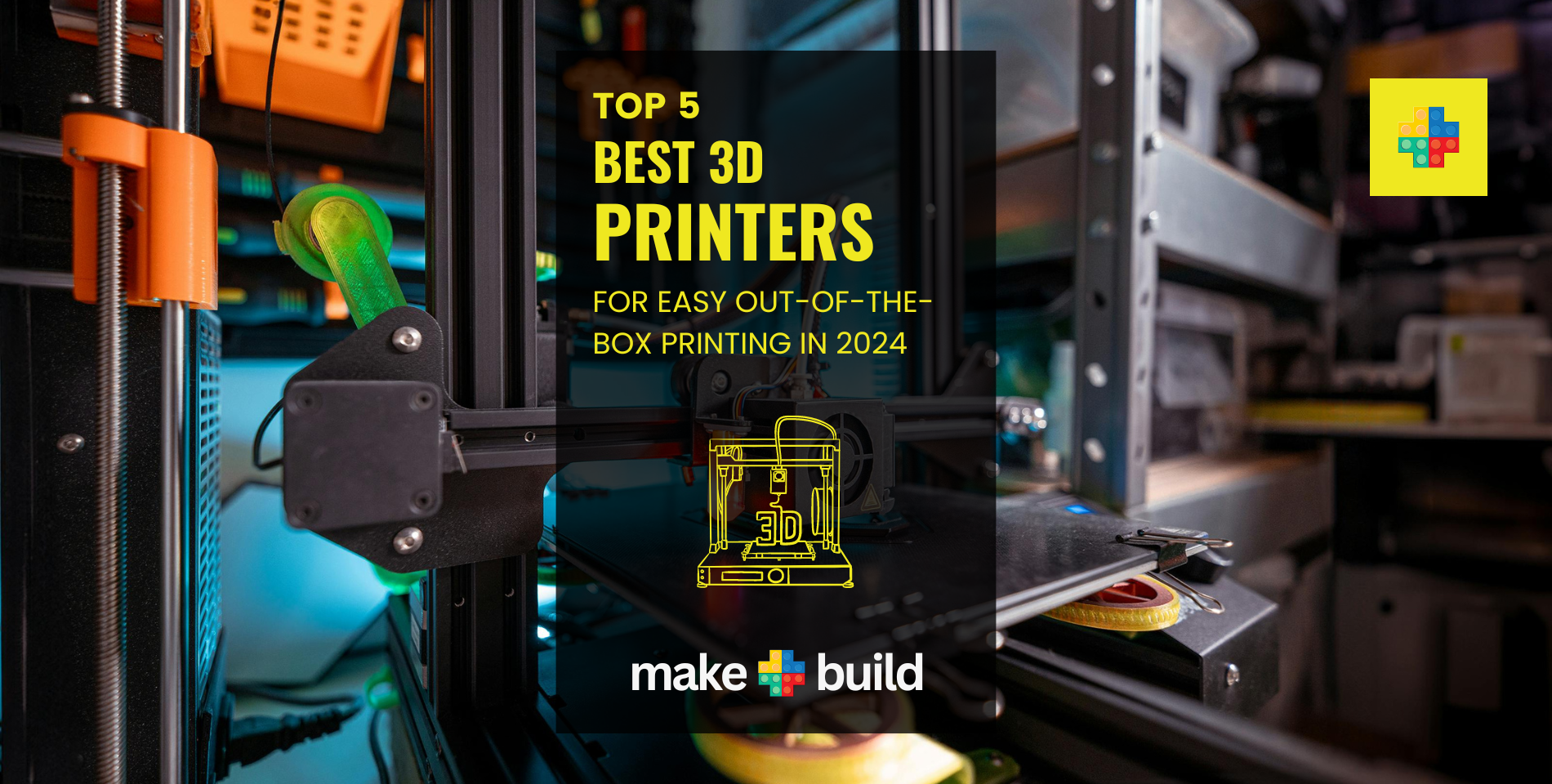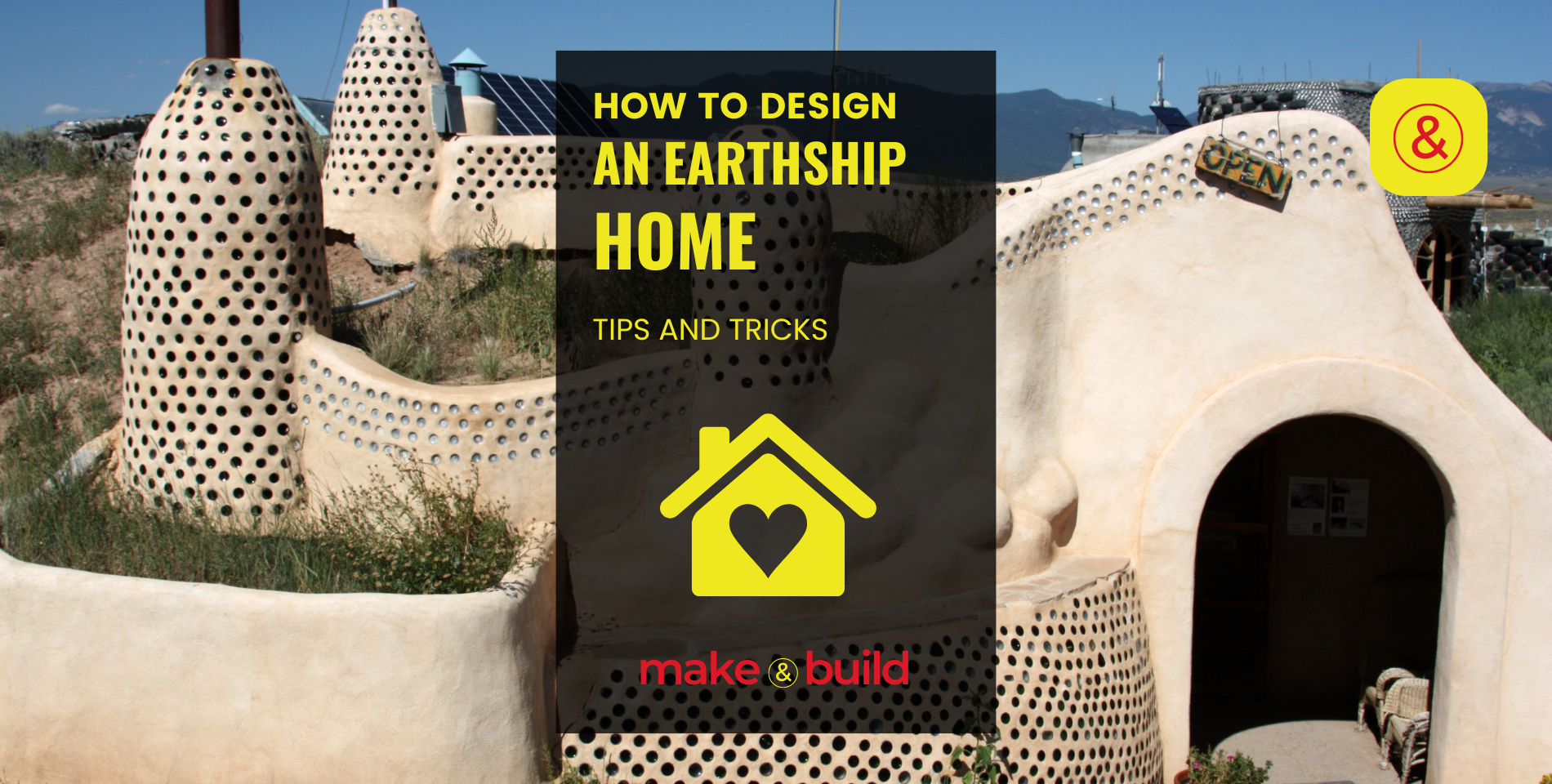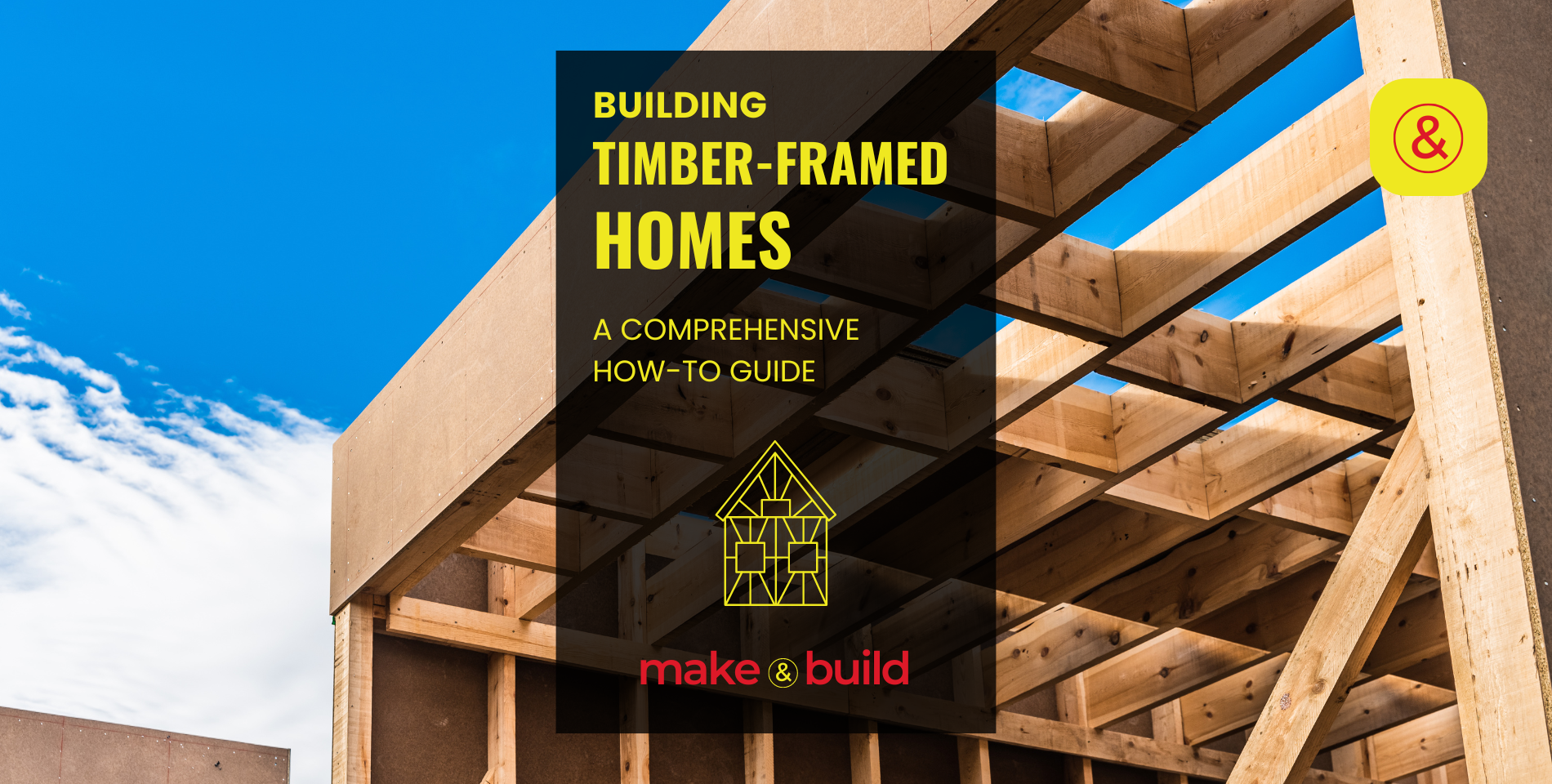3D Printed Homes (Printed Concrete Structures)
3D-printed homes use robotic extrusion systems to layer concrete, clay, or composite materials, creating structures faster and with minimal waste.
3D Printed Homes (Printed Concrete Structures)
3D-printed homes use robotic extrusion systems to layer concrete, clay, or composite materials, creating structures faster and with minimal waste.
3D Printed Home Building Insights
✅ Overall Building Method Score
🏠 Overall Durability Score
🛠️ Structural Integrity Score
🏠 Indoor Air Quality & Non-Toxicity Score
🔥 Fire Resistance Score
🌊 Flood Resistance Score
💨 Hurricane/Wind Resistance Score
🌎 Earthquake Resistance Score
🐜 Pest Resistance Score
❄️ Insulation Efficiency Score
🔇 Soundproofing Score
🔋 Energy Efficiency Score
♻️ Eco-Friendliness Score
📍 Material Availability Score
🚀 Construction Speed Score
🔨 DIY Friendliness Score
👷 Skilled Labor Requirement Score
🏡 Customization Score
🌦️ Weather Adaptability Score
🔄 Maintenance Requirement Score
🗑️ Waste Reduction Score
🏗️ Foundation Strength Score
🏙️ Urban Suitability Score
🛖 Off-Grid Suitability Score
🌱 Sustainability Rating Score
💰 Cost-Efficiency Score
📑 Permit & Regulation Difficulty Score
📈 Scalability Score
⏳ Material Longevity Score
🔥 Heat Retention Score
❄️ Cooling Efficiency Score
📖 Building Method Overview:
3D printing in construction is an automated process that builds walls layer by layer using specially formulated materials like concrete, clay, or bio-based composites. The technology emerged in the early 2000s but has gained momentum due to cost efficiency, sustainability, and reduced labor requirements. These homes can be printed in 24 hours to a few weeks, making them a fast, customizable, and eco-friendly alternative to traditional construction.
🏗️ Primary Materials Used
💰 Estimated Cost Per Square Foot
$80 – $250/sq ft
⏳ Average Construction Time
24 hours – 3 weeks
🌎 Best Climate for This Method
All climates; adaptable with proper insulation and material selection
🏠 Structural Durability
✔️ Fire-resistant
✔️ Highly durable but dependent on material formulation
✔️ Can withstand extreme weather with reinforced designs
🏡 Common Applications
Tiny Homes, Affordable Housing, Urban Buildings, Off-Grid Homes, Emergency Shelter
🎨 Architectural Compatibility
Modern, Minimalist, Sustainable, Futuristic
⚡ Energy Efficiency
High – Thermal mass materials enhance insulation and reduce energy costs
📜 Origin of Method
Developed in the early 2000s; first prototypes emerged in China and the Netherlands.
🌍 Most Common Locations
USA, China, Netherlands, UAE, Mexico
🏛️ Earliest Known Example
2014 – WinSun (China) built 10 3D-printed houses in a single day.
🎭 Cultural Influence
Adopted globally as a solution for low-cost housing and sustainability.
📊 Popularity Today
Growing rapidly with increased government-backed projects and commercial adoption.
🏙️ Urban vs. 🌲 Rural Suitability
✅ Works well in urban areas for mass housing projects
✅ Ideal for remote, disaster-prone, or off-grid locations due to fast build time
🌡️ Best Climate Adaptation
All climates – Performance depends on material selection and insulation methods
🗺️ Best Geographic Terrain
Flatlands, Arid Regions, Coastal Areas, Disaster Zones
⏳ Typical Lifespan
50 – 100+ years, depending on reinforcement and maintenance
🪵 Primary Load-Bearing Material
Concrete, Composite Polymers, Clay-Based Mixtures
🌪️ Resistance to Natural Disasters
✅ Earthquake-resistant (if reinforced properly)
✅ Fire-resistant
✅ Some designs can be made hurricane- and flood-resistant
📜 Required Building Permits
🌍 Varies by region – Some countries have limited regulations for 3D-printed homes
🔨 DIY vs. 👷 Contractor Needed?
🔧 Requires specialized 3D printing equipment and expertise
🔄 Ease of Expansion
✔️ Easily scalable with modular additions
✔️ Can integrate with traditional construction methods
💨 Indoor Air Quality
Good – Materials do not emit harmful VOCs
🔇 Acoustic Performance
Moderate – Depends on wall density and insulation
♻️ Material Sustainability
✅ Can use recycled plastic or bio-based materials
✅ Lower CO₂ emissions than traditional construction
🗑️ Construction Waste Output
Minimal – Less than 5% waste compared to traditional construction
🌞 Thermal Regulation
Good – Thermal mass of printed concrete retains heat and stabilizes temperatures
🐜 Pest & Mold Resistance
✔️ Mold-resistant
✔️ Pest-resistant (if using composite materials)
🔥 Fire Resistance Level
High – Non-combustible materials
⚖️ Structural Weight
Medium – Lighter than traditional concrete, but heavy compared to wood
🎨 Customization Flexibility
✔️ Highly customizable – Complex geometric designs are easily achievable
🔋 Most Common Energy Pairing
Solar panels, Geothermal, Wind Energy
🧊 Best Insulation Pairing
Spray Foam, Aerogel Panels, Hempcrete
🌱 Environmental Impact Score
Low – Minimal waste and reduced material usage
🛕 Common Countries Using This Method
USA, Netherlands, China, UAE, Mexico, Italy
🏗️ Alternative Methods
Modular Prefabricated Homes, Rammed Earth Construction, Shipping Container Homes
🏰 Famous Example of This Method
📍 ICON Vulcan 3D-Printed Homes (USA) – Low-cost housing built in 24 hours
🏗️ The Historical Evolution of 3D-Printed Homes
The concept of 3D printing in construction is relatively new, yet it has revolutionized building methods in just a few decades. What began as an experimental technology for prototyping has now evolved into a disruptive force in architecture, capable of producing affordable, sustainable, and durable homes in record time.
📜 Early Foundations: The Origins of 3D-Printed Construction
🔹 1980s-1990s: The Birth of 3D Printing
- The first 3D printing technology was developed in 1984 by Chuck Hull, known as stereolithography (SLA).
- Early applications were limited to small-scale prototyping in manufacturing and medicine.
- Concrete extrusion techniques were proposed in the late 1990s but were not yet commercially viable.
🔹 2000s: First Steps Toward Large-Scale Printing
- Researchers began exploring automated concrete layering for large structures.
- In 2004, Professor Behrokh Khoshnevis at the University of Southern California developed Contour Crafting, a layer-by-layer method for printing full-scale buildings.
- The first small-scale concrete prototypes were printed, proving that the technology could be used in construction.
🏗️ The Rise of 3D-Printed Homes: 2010s-2020s
🔹 2014-2018: First Full-Scale Homes Are Built
- 2014: Chinese company WinSun printed 10 small houses in 24 hours, demonstrating the speed and affordability of the method.
- 2016: Dubai unveiled the world’s first 3D-printed office building, marking government-backed adoption of the technology.
- 2017: Apis Cor printed a 400-square-foot home in Russia in just 24 hours, showcasing on-site 3D printing for real-world housing needs.
🔹 2019-2023: Global Expansion & Affordable Housing Solutions
- The first 3D-printed residential communities were announced in Mexico, the U.S., and the Netherlands.
- ICON, a U.S.-based company, developed Vulcan 3D printing, which could print homes up to 2,000 sq. ft. in under a week.
- The world’s first 3D-printed neighborhood was built in Tabasco, Mexico, aimed at solving housing shortages.
🌍 The Future of 3D-Printed Construction
🔹 2025 & Beyond: Mass Adoption & Space Colonization
- Governments and private companies are investing heavily in 3D-printed housing for low-income and disaster-stricken areas.
- NASA and ESA are exploring 3D-printed lunar and Martian habitats, using local materials (regolith) to print space structures.
- The integration of AI, robotics, and self-healing materials will further optimize 3D printing technology, reducing costs and increasing durability.
💡 Conclusion: How Far Has 3D-Printed Construction Come?
✔️ In just two decades, 3D printing has gone from experimental prototypes to full-scale homes.
✔️ Affordability, speed, and sustainability make it one of the most promising construction methods for the future.
✔️ Innovations in AI, robotics, and materials science will drive mass adoption in urban planning, disaster relief, and even space colonization.
🌍 Geographic Suitability of 3D-Printed Homes
3D-printed homes offer versatility and adaptability, making them suitable for a wide range of environments. However, geographic factors such as climate, terrain, infrastructure, and material availability influence their effectiveness in different regions. This section explores where 3D-printed construction thrives, where it faces challenges, and how the technology is adapting to diverse landscapes.
🏙️ Urban vs. Rural Suitability
🏙️ Urban Areas – ✅ Highly Suitable
- Rapid construction speed makes 3D printing ideal for affordable housing projects in cities.
- Lower material waste benefits dense metropolitan areas with strict environmental regulations.
- Customization options allow for innovative high-density, multi-story designs.
- Challenges: Zoning laws and permitting restrictions can slow down adoption in cities.
🌲 Rural & Off-Grid Areas – ✅ Suitable with Adaptations
- Minimal labor requirements make 3D printing ideal for remote locations.
- Can function off-grid with solar energy and sustainable water systems.
- Challenges: Requires specialized equipment and reliable material delivery.
🌍 Climate Adaptation: Where Does 3D Printing Work Best?
🌞 Hot & Arid Climates (Deserts, Drylands) – ✅ Highly Suitable
- Concrete-based 3D printing materials provide excellent heat resistance.
- Thick walls and passive cooling designs reduce the need for air conditioning.
- Examples: Dubai, Arizona, Mexico, North Africa.
❄️ Cold & Polar Climates (Tundras, High Altitudes) – 🟡 Moderately Suitable
- Thermal mass of concrete helps retain heat, but insulation must be added.
- Freeze-thaw cycles can weaken layers if not reinforced properly.
- Examples: Alaska, Canada, Russia, Scandinavia.
🌊 Coastal & Flood-Prone Regions – 🟡 Moderately Suitable
- Water-resistant concrete mixes are being developed to withstand high humidity.
- Elevated 3D-printed designs can protect against rising sea levels.
- Challenges: Requires waterproof coatings and reinforced foundations.
- Examples: Florida, Netherlands, Philippines, Bangladesh.
🌪️ Disaster-Prone Areas (Earthquakes, Hurricanes, Wildfires) – 🟡 Moderately Suitable
- Earthquake-resistant reinforcement can be incorporated into printed structures.
- Fireproof materials improve durability, but wind resistance needs improvement.
- Examples: Japan, California, Caribbean, Indonesia.
🗺️ Best Geographic Terrain for 3D-Printed Homes
| Terrain Type | Suitability | Notes |
|---|---|---|
| Flatlands | ✅ Highly Suitable | Ideal for rapid, large-scale projects. |
| Deserts | ✅ Highly Suitable | Heat-resistant materials perform well. |
| Coastal Regions | 🟡 Moderately Suitable | Needs waterproof coatings and elevation. |
| Mountainous Areas | ❌ Less Suitable | Challenging for large-scale printers to operate. |
| Jungle & Rainforest | ❌ Less Suitable | Humidity may weaken unprotected materials. |
🛕 Regional Adoption: Countries Leading in 3D-Printed Homes
✅ United States – Large-scale adoption in Texas, California, and Arizona.
✅ China – WinSun is leading the development of multi-story 3D-printed buildings.
✅ United Arab Emirates – Dubai aims to have 25% of new buildings 3D-printed by 2030.
✅ Netherlands – Several fully printed houses are already occupied.
✅ Mexico – Developing affordable housing projects using 3D printing.
💡 Conclusion: Where Does 3D-Printed Housing Work Best?
✔️ Ideal for urban expansion, desert environments, and affordable housing projects.
✔️ Can be adapted for off-grid and rural locations with the right logistics.
✔️ Challenging in extreme cold, wet, and mountainous areas, but new materials are improving adaptability.
🛠️ Structural Integrity of 3D-Printed Homes
Structural integrity is a critical factor in determining the safety, durability, and resilience of a construction method. While 3D-printed homes are transforming the industry with speed and sustainability, their strength and stability depend on material quality, reinforcement techniques, and environmental conditions.
🏗️ How Strong Are 3D-Printed Homes?
3D-printed homes use an extrusion-based construction process, layering concrete or composite materials to form solid, reinforced walls. Unlike traditional bricks and mortar, this continuous layering technique reduces weak points, creating a uniform and stable structure. However, structural strength depends on the material mix, bonding quality, and reinforcement strategies.
✅ Fewer seams and joints reduce structural weak points.
✅ Customizable reinforcement options improve durability.
✅ High compression strength, but tensile support is necessary for flexibility.
🔹 Compression Strength vs. Tensile Strength
Compression Strength (Withstands Vertical Pressure) – ✅ High
3D-printed concrete is highly resistant to compressive forces, similar to traditional concrete structures.
Tensile Strength (Resists Bending & Stretching) – 🟡 Moderate
Without reinforcement, printed concrete is prone to cracking under tension, requiring steel bars, fibers, or hybrid materials for added strength.
🌪️ How Well Do 3D-Printed Homes Withstand Natural Forces?
| Structural Challenge | Performance | Notes |
|---|---|---|
| Wind & Hurricanes | 🟡 Moderate | Strong but requires reinforcement for extreme winds. |
| Earthquakes | 🟡 Moderate-High | Can be reinforced with flexible materials to improve shock absorption. |
| Flooding & Water Damage | 🟡 Moderate | Concrete is naturally water-resistant, but foundations must be elevated in flood zones. |
| Fire Resistance | ✅ High | Non-combustible materials provide strong fire protection. |
| Pest Resistance | ✅ Very High | No wooden components, making it immune to termites and rodents. |
🛠️ Reinforcement Methods for Stronger 3D-Printed Homes
To enhance structural performance, several reinforcement strategies can be applied.
🔗 Steel & Rebar Reinforcement
- Embedding steel bars within printed layers improves tensile strength.
- Used in seismic zones and multi-story 3D-printed buildings.
🧬 Fiber-Reinforced Concrete (FRC)
- Glass, carbon, or polymer fibers added to the concrete mixture increase flexibility.
- Reduces cracking and enhances impact resistance.
🧱 Hybrid Construction (Printed + Traditional)
- Combining 3D-printed structures with steel beams, prefabricated panels, or wooden supports increases overall strength.
- Example: ICON’s 3D-printed homes use traditional roofing structures to improve durability.
📊 Structural Integrity Score Breakdown (0-100)
| Category | Score | Notes |
|---|---|---|
| Overall Structural Integrity | 80 | Strong but requires reinforcement for extreme conditions. |
| Compression Strength | 90 | Comparable to traditional concrete buildings. |
| Tensile Strength | 70 | Requires rebar, fibers, or hybrid reinforcement. |
| Fire Resistance | 95 | Highly fire-resistant due to non-combustible materials. |
| Wind & Storm Resistance | 65 | Can withstand storms but needs reinforced design. |
| Earthquake Resistance | 75 | Performs well with proper reinforcement techniques. |
| Water & Flood Resistance | 70 | Water-resistant but requires elevated foundations in flood-prone areas. |
| Pest & Mold Resistance | 95 | No organic materials, resistant to termites, rodents, and mold. |
💡 Conclusion: Is 3D Printing Structurally Reliable?
✔️ 3D-printed homes are strong, durable, and resistant to fire, pests, and environmental wear.
✔️ Reinforcement techniques like rebar, fiber additives, and hybrid designs improve stability.
✔️ Performance in hurricanes, earthquakes, and floods depends on material selection and construction techniques.
✔️ As technology advances, stronger and more adaptive 3D-printed structures will become the industry standard.
💰 Cost Breakdown of 3D-Printed Homes
3D-printed homes are revolutionizing construction by reducing material waste, lowering labor costs, and accelerating build times. While they offer significant savings over traditional construction, the final cost depends on factors like materials, location, reinforcement, and design complexity. Below is a detailed breakdown of 3D-printed home costs, comparing key expenses to conventional building methods.
🏗️ How Much Does a 3D-Printed Home Cost?
The cost of a 3D-printed home typically falls between $80 and $250 per square foot, depending on:
✅ Printing technology & equipment – Large-scale 3D printers vary in cost and capability.
✅ Material selection – Concrete, composites, and specialty mixes affect pricing.
✅ Reinforcement & finishing – Additional elements like rebar, insulation, and roofing impact total expenses.
✅ Site preparation – Land clearing, foundation work, and utility hookups contribute to costs.
🔹 Cost Comparison: 3D-Printed Homes vs. Traditional Construction
| Expense Category | 3D-Printed Homes 🏗️ | Traditional Homes 🏠 |
|---|---|---|
| Labor Costs | 🔽 Low – 30-50% savings | 🔼 High – Requires skilled workers |
| Material Costs | 🔽 Low – Minimal waste | 🔼 High – Excess materials & waste |
| Construction Time | 🔽 Short – Days to weeks | 🔼 Long – Months to years |
| Customization Costs | 🔼 Higher for unique designs | 🔼 Higher for custom builds |
| Foundation Costs | 🔼 Moderate | 🔼 Moderate |
| Permit & Regulation Costs | 🔼 Varies by location | 🔼 Established standards |
| Maintenance Costs | 🔽 Low – Fewer repairs | 🔼 Higher – Traditional materials degrade faster |
💰 Major Cost Factors in 3D-Printed Construction
🏗️ 3D Printing Equipment & Setup Costs
- Large-scale 3D printers range from $50,000 to $500,000, but companies and contractors typically lease or own them.
- Site setup, including material storage and robotic arm placement, adds to the upfront investment.
🧱 Material Costs: Concrete & Alternative Mixes
- Concrete-based mixes are the most common and cost $30-$50 per cubic yard.
- Recycled materials, hempcrete, and bio-composites can increase costs but improve sustainability.
🛠️ Reinforcement & Structural Enhancements
- Adding steel rebar, fiber reinforcements, or hybrid construction elements increases durability but adds 10-20% to costs.
- Roofs, windows, and electrical/plumbing installations require traditional construction methods, contributing additional labor and material expenses.
🏗️ Site Preparation & Foundation Costs
- Foundation work is still required, ranging from $5,000 to $25,000, depending on the soil type and design.
- Utility hookups (electricity, water, sewage) are separate expenses, just like with traditional homes.
📊 Cost Breakdown Per Square Foot (Estimated Ranges)
| Category | Estimated Cost ($/sq ft) | Notes |
|---|---|---|
| 3D Printing Process | $30 – $80 | Includes material extrusion, printer operation |
| Site Preparation | $10 – $30 | Land clearing, foundation work |
| Roofing & Insulation | $20 – $50 | Traditional or modular roofing methods |
| Windows & Doors | $10 – $40 | Customization affects pricing |
| Electrical & Plumbing | $20 – $60 | Traditional installation required |
| Finishing & Interiors | $30 – $70 | Paint, flooring, cabinetry, fixtures |
| Total Estimated Cost | $80 – $250 | Varies based on design complexity |
🔍 Cost Advantages of 3D-Printed Homes
✅ Lower Labor Costs – Reduces reliance on skilled construction workers.
✅ Minimal Material Waste – Uses only the necessary amount, cutting costs.
✅ Faster Build Times – Shortens labor and equipment rental expenses.
✅ Sustainability Benefits – Potential tax incentives for eco-friendly construction.
⚠️ Cost Challenges & Limitations
🔸 High Initial Equipment Investment – Large-scale 3D printers are expensive.
🔸 Permit & Zoning Issues – Some regions have unclear regulations, leading to added costs.
🔸 Specialized Materials May Increase Costs – Not all materials are widely available, which can inflate pricing.
🔸 Additional Finishing & Utility Work Needed – 3D printing doesn’t eliminate all traditional construction costs.
💡 Conclusion: Are 3D-Printed Homes Cost-Effective?
✔️ 3D-printed homes significantly reduce labor and material waste costs.
✔️ They are ideal for affordable housing, disaster relief, and sustainable development.
✔️ While the technology is cost-effective, additional expenses for roofing, insulation, and finishing must be considered.
✔️ As regulations adapt and material costs decrease, 3D-printed homes will become even more affordable.
⏳ Construction Time & Labor Intensity of 3D-Printed Homes
One of the biggest advantages of 3D-printed homes is their fast construction time and reduced labor requirements. Compared to traditional construction, which can take months to years, 3D printing can complete a home in just days or weeks. Additionally, the automation of the printing process significantly lowers the need for manual labor, cutting costs and increasing efficiency.
🏗️ How Long Does It Take to Build a 3D-Printed Home?
The average construction time for a 3D-printed home depends on:
✅ Size & complexity – A small home (400-600 sq. ft.) can be printed in 24-48 hours, while larger homes (1,500+ sq. ft.) may take up to a few weeks.
✅ Printing speed & equipment – Advanced printers can deposit materials at 1-3 feet per second.
✅ Finishing work – The printing process only accounts for the walls, while roofing, electrical, plumbing, and interior finishing require additional time.
🔹 Time Comparison: 3D-Printed Homes vs. Traditional Homes
| Build Stage | 3D-Printed Homes ⏳ | Traditional Homes 🏠 |
|---|---|---|
| Foundation Work | 1-3 days | 1-2 weeks |
| Wall Construction | 1-10 days | 1-3 months |
| Roofing & Insulation | 1-2 weeks | 3-6 weeks |
| Electrical & Plumbing | 1-2 weeks | 3-5 weeks |
| Interior & Finishing | 1-3 weeks | 4-8 weeks |
| Total Time to Completion | 2-8 weeks | 4-12 months |
💼 How Much Labor Is Required?
One of the key benefits of 3D-printed construction is the significant reduction in labor.
✅ Minimal on-site workers – Only 3-5 operators are needed to oversee the printing process.
✅ Less reliance on skilled labor – Traditional bricklaying, framing, and extensive manual work are eliminated.
✅ Automation reduces human error – AI-controlled precision printing ensures consistency and reduces delays.
However, certain labor-intensive tasks remain, including:
🔸 Foundation work – Requires manual preparation before printing begins.
🔸 Roofing & insulation – Often installed conventionally due to material limitations.
🔸 Electrical & plumbing – Must be integrated after printing by skilled tradespeople.
🔸 Interior finishing – Tasks like painting, flooring, and cabinetry still require manual labor.
🛠️ Labor Requirements: 3D-Printed Homes vs. Traditional Construction
| Labor Category | 3D-Printed Homes 👷♂️ | Traditional Homes 🏠 |
|---|---|---|
| Construction Workers | 🔽 Minimal – 3-5 operators | 🔼 Large crew – 10-20 workers |
| Skilled Labor Needs | 🔽 Low – Mostly automated | 🔼 High – Requires masons, carpenters, electricians |
| Manual Bricklaying | ❌ Not required | ✅ Essential |
| Roofing & Insulation | ✅ Needed | ✅ Needed |
| Plumbing & Electrical | ✅ Needed | ✅ Needed |
| Overall Labor Intensity | 🔽 Low | 🔼 High |
📊 Construction Speed & Labor Efficiency Score (0-100)
| Category | Score | Notes |
|---|---|---|
| Overall Construction Speed | 95 | Homes can be printed in 24 hours to a few weeks. |
| Labor Reduction | 90 | Requires 80% fewer workers than traditional methods. |
| Manual Work Required | 50 | Still needs human labor for finishing, roofing, and utilities. |
| Automation Efficiency | 85 | AI-guided printing reduces errors & improves precision. |
| On-Site Complexity | 40 | Requires careful planning, but eliminates traditional framing work. |
🔍 Key Time & Labor Advantages of 3D-Printed Homes
✅ Faster build times – Homes can be printed in days instead of months.
✅ Lower labor costs – Requires fewer workers, reducing overall project expenses.
✅ Increased precision – Automation reduces human error, improving structural quality.
✅ Less physically demanding – Eliminates heavy lifting and repetitive manual labor.
⚠️ Challenges & Limitations
🔸 Printing speed depends on equipment & material drying time – Large homes take longer.
🔸 Skilled workers are still required for plumbing, electrical, and finishing.
🔸 Some tasks (roofing, windows, insulation) are not yet fully automated.
🔸 Material consistency affects speed – Some mixes dry slower, impacting progress.
💡 Conclusion: Is 3D-Printed Construction the Fastest Building Method?
✔️ 3D-printed homes are significantly faster than traditional construction, reducing build times by 50-80%.
✔️ Automation reduces labor intensity, requiring fewer workers and less manual effort.
✔️ While core structures can be printed quickly, finishing work still follows traditional timelines.
✔️ As technology advances, fully automated home construction could become the norm, further increasing speed and efficiency.
🌱 Sustainability of 3D-Printed Homes
3D-printed homes are gaining attention as a sustainable alternative to traditional construction. By minimizing material waste, optimizing energy efficiency, and incorporating eco-friendly materials, this method reduces the environmental footprint of homebuilding. However, sustainability varies depending on materials, energy use, and location.
♻️ How Sustainable Are 3D-Printed Homes?
Compared to traditional construction, 3D-printed homes use fewer resources, generate less waste, and offer greater efficiency. The primary sustainability benefits include:
✅ Minimal material waste – Uses only the necessary amount, reducing excess.
✅ Lower carbon footprint – Requires fewer raw materials and emits less CO₂.
✅ Energy-efficient production – Automated printing optimizes energy use.
✅ Potential for eco-friendly materials – Can integrate recycled plastics, bio-concrete, and sustainable composites.
However, sustainability depends on factors like material sourcing, printing technology, and long-term building efficiency.
🔹 3D-Printed Homes vs. Traditional Construction: Sustainability Comparison
| Sustainability Factor | 3D-Printed Homes 🌱 | Traditional Homes 🏗️ |
|---|---|---|
| Material Waste | 🔽 Minimal – Uses only what’s needed | 🔼 High – Cutting & shaping create excess waste |
| Carbon Emissions | 🔽 Lower – Reduced raw material use | 🔼 Higher – Energy-intensive processes |
| Energy Efficiency | 🔼 High – Precision reduces energy loss | 🔽 Lower – Traditional methods waste energy |
| Eco-Friendly Materials | 🔼 Possible – Can integrate sustainable materials | 🔽 Limited – Often uses non-renewable resources |
| Construction Pollution | 🔽 Minimal – Less site disturbance & dust | 🔼 High – Dust, noise, and material transport emissions |
🏗️ Eco-Friendly Materials Used in 3D-Printed Homes
One of the biggest sustainability advantages of 3D-printed homes is the ability to use alternative, eco-friendly building materials.
🔬 Recycled Concrete & Cement Alternatives
- Uses repurposed materials, reducing mining and cement production.
- Lower CO₂ emissions compared to conventional concrete.
🧱 Bio-Based & Natural Building Materials
- Hempcrete – A biodegradable, carbon-negative alternative that insulates well.
- Clay & Earth-Based Mixtures – Reduce reliance on industrial cement.
🌍 Recycled Plastics & Composite Polymers
- Plastic-infused concrete mixes reduce plastic waste.
- Composite materials offer durability and flexibility with a lower environmental impact.
⚡ Energy Efficiency & Carbon Footprint
3D-printed homes are designed for high energy efficiency, reducing long-term environmental impact.
🏡 Lower Carbon Footprint
- Traditional construction accounts for ~38% of global CO₂ emissions, while 3D-printed homes use fewer resources and emit less CO₂.
- Fewer transportation emissions since materials can be printed on-site.
🌞 Renewable Energy Integration
- Ideal for pairing with solar panels & geothermal heating.
- Smart insulation options reduce heating and cooling needs.
♻️ Net-Zero & Carbon-Neutral Potential
- Some 3D-printed buildings achieve net-zero status by combining recycled materials, solar energy, and smart home technology.
- Companies like ICON and WASP are developing fully sustainable, off-grid 3D-printed homes.
📊 Sustainability Score Breakdown (0-100)
| Category | Score | Notes |
|---|---|---|
| Overall Sustainability | 90 | Minimal waste, lower emissions, and eco-material potential. |
| Material Waste Reduction | 98 | Uses only the necessary amount of material, nearly zero waste. |
| Carbon Footprint | 85 | Lower emissions, but cement-based mixes still contribute to CO₂. |
| Energy Efficiency | 90 | High thermal efficiency, reduces heating and cooling costs. |
| Eco-Friendly Material Use | 80 | Recycled materials are possible but not standard everywhere. |
| Construction Pollution | 95 | Less noise, dust, and emissions compared to traditional methods. |
🔍 Key Sustainability Benefits of 3D-Printed Homes
✅ Drastically reduces material waste, making it one of the most resource-efficient construction methods.
✅ Lower energy consumption during construction compared to traditional homebuilding.
✅ Potential for net-zero housing, especially when paired with solar, wind, or geothermal energy.
✅ Eliminates the need for extensive transportation, as materials can be sourced and printed on-site.
⚠️ Sustainability Challenges & Limitations
🔸 Cement-based mixes still contribute to CO₂ emissions, though alternatives like hempcrete and bio-based concretes are emerging.
🔸 Not all 3D-printed materials are biodegradable or fully recyclable, requiring more innovation in sustainable printing formulas.
🔸 Sustainability varies by location, depending on energy sources, regulations, and available materials.
💡 Conclusion: Are 3D-Printed Homes the Future of Sustainable Construction?
✔️ 3D-printed homes offer one of the most eco-friendly construction methods available today, with lower waste, fewer emissions, and energy-efficient designs.
✔️ Material innovation continues to improve sustainability, allowing for greater use of recycled and bio-based materials.
✔️ Net-zero and off-grid 3D-printed homes are becoming a reality, especially in remote and developing regions.
✔️ As technology advances, 3D-printed construction could become the most sustainable homebuilding method worldwide.
⚡ Energy Efficiency & Insulation in 3D-Printed Homes
Energy efficiency is a key advantage of 3D-printed homes, as their unique wall structures and material compositions contribute to better thermal performance and reduced energy consumption. These homes can be custom-designed for optimal insulation, reducing the need for heating and cooling, which in turn lowers energy costs and carbon emissions.
🏠 How Energy Efficient Are 3D-Printed Homes?
Compared to traditional homes, 3D-printed homes offer enhanced energy efficiency due to:
✅ Customizable wall thickness – Printed homes can have thicker, more insulated walls without extra cost.
✅ Thermal mass benefits – Materials like concrete and clay retain heat, reducing heating/cooling fluctuations.
✅ Minimal thermal bridging – Fewer seams in 3D-printed walls prevent energy loss compared to brick-and-mortar construction.
✅ Integration with renewable energy – Easier to design for solar, geothermal, and smart energy systems.
🔹 Energy Efficiency Comparison: 3D-Printed Homes vs. Traditional Homes
| Factor | 3D-Printed Homes ⚡ | Traditional Homes 🏠 |
|---|---|---|
| Wall Insulation | 🔼 High – Customizable thickness | 🔽 Varies – Insulation must be added separately |
| Thermal Bridging | 🔽 Minimal – Fewer gaps & seams | 🔼 Higher – More areas for heat loss |
| Passive Heating/Cooling | 🔼 Strong – Thermal mass benefits | 🔽 Weaker – Requires additional design modifications |
| Energy Consumption | 🔽 Lower – Can be optimized | 🔼 Higher – Heating & cooling systems work harder |
| Solar & Renewable Adaptability | 🔼 Easy – Built-in design considerations | 🔽 Requires modifications |
🧊 How Well Do 3D-Printed Homes Insulate?
One of the biggest benefits of 3D-printed homes is their ability to integrate insulation directly into the printing process.
🏗️ Insulation Advantages of 3D-Printed Homes
✅ Curved and layered wall designs allow for built-in air pockets that enhance insulation.
✅ Concrete and composite materials provide natural thermal resistance.
✅ Layered printing allows for advanced insulation infill between walls.
However, some limitations exist depending on the materials used.
🔬 Best Insulation Methods for 3D-Printed Homes
✅ Aerogel Panels – Extremely lightweight and highly insulating.
✅ Spray Foam Insulation – Easily applied between printed layers.
✅ Hempcrete – A sustainable, breathable insulation alternative.
✅ Vacuum Insulated Panels (VIPs) – Ultra-thin but extremely energy-efficient.
🌞 Renewable Energy Integration
One of the major benefits of 3D-printed construction is that homes can be pre-designed to integrate renewable energy sources.
🔋 Solar Power Adaptation
- Flat or curved roof designs can optimize solar panel placement.
- Walls can be printed with built-in conduits for solar wiring.
🌍 Geothermal & Passive Heating
- Thicker concrete walls naturally retain heat during the day and release it at night.
- Geothermal loops can be installed directly into the foundation for energy savings.
📊 Energy Efficiency & Insulation Score Breakdown (0-100)
| Category | Score | Notes |
|---|---|---|
| Overall Energy Efficiency | 90 | Reduced energy loss & passive heating benefits. |
| Wall Insulation Performance | 85 | Strong thermal mass, but depends on insulation type. |
| Thermal Bridging Reduction | 95 | Fewer gaps and seams compared to traditional homes. |
| Passive Heating & Cooling | 80 | Good performance but requires additional insulation in extreme climates. |
| Solar & Renewable Readiness | 90 | Easier integration compared to conventional buildings. |
🔍 Key Energy Benefits of 3D-Printed Homes
✅ More energy-efficient than traditional homes due to better wall designs and fewer thermal weak points.
✅ Lower heating & cooling costs due to optimized insulation and thermal mass advantages.
✅ Easier integration with renewable energy, making it ideal for net-zero living.
✅ Less energy-intensive to build, reducing the overall carbon footprint of construction.
⚠️ Challenges & Limitations
🔸 Material choice affects insulation performance – Concrete alone does not insulate well.
🔸 Extreme climates require additional insulation layers – Spray foam or composite materials needed.
🔸 Energy efficiency varies by design – Some printed designs are better optimized than others.
💡 Conclusion: Are 3D-Printed Homes Energy-Efficient?
✔️ 3D-printed homes can be more energy-efficient than traditional homes, especially when paired with proper insulation and renewable energy.
✔️ Advanced printing techniques allow for custom wall designs, improving thermal efficiency.
✔️ With smart insulation and energy-saving features, these homes can achieve net-zero energy consumption.
✔️ As insulation technology improves, 3D-printed homes will continue to lead in sustainable, energy-efficient construction.
🔧 Maintenance & Longevity of 3D-Printed Homes
3D-printed homes are designed to be durable, low-maintenance, and long-lasting, with fewer material weaknesses and reduced upkeep costs compared to traditional homes. However, their lifespan and required maintenance depend on material choice, environmental conditions, and reinforcement methods.
🏠 How Long Do 3D-Printed Homes Last?
With proper maintenance and high-quality materials, a 3D-printed home can last 50-100 years or more.
✅ Concrete and composite materials are highly durable and resistant to wear.
✅ Fewer seams and joints reduce structural weaknesses over time.
✅ Reinforcement methods like fiber additives and rebar improve longevity.
✅ Weatherproofing and insulation enhance lifespan in extreme climates.
However, factors like material degradation, environmental exposure, and climate conditions can impact longevity.
🔹 3D-Printed Homes vs. Traditional Homes: Longevity & Maintenance
| Factor | 3D-Printed Homes 🏗️ | Traditional Homes 🏠 |
|---|---|---|
| Structural Lifespan | 🔼 50-100+ years | 🔼 75-150 years (varies by material) |
| Cracking & Repairs | 🔽 Minimal – Fewer joints reduce cracking | 🔼 Higher – Bricks & mortar degrade over time |
| Pest Resistance | 🔼 High – No organic materials | 🔽 Low – Wood-based structures require termite control |
| Mold & Water Damage | 🔼 Low – Concrete is naturally resistant | 🔽 Moderate – Wood is vulnerable to moisture |
| Fire Resistance | 🔼 High – Non-combustible materials | 🔽 Varies – Wood-based homes require treatments |
| General Maintenance | 🔽 Low – Fewer repairs needed | 🔼 High – Paint, siding, and roofing degrade faster |
🏗️ Key Maintenance Factors for 3D-Printed Homes
Even though 3D-printed homes require less maintenance overall, certain upkeep tasks are still necessary.
🔨 Structural Integrity & Crack Prevention
- Concrete and composite materials can develop surface cracks over time due to temperature changes and settling.
- Sealants and periodic inspections can help prevent major issues.
💦 Water & Moisture Protection
- 3D-printed homes in humid or rainy climates may require water-resistant coatings.
- Elevated foundations in flood-prone areas improve longevity.
🌡️ Thermal Expansion & Weathering
- Extreme temperature shifts can cause material expansion and contraction, leading to small cracks.
- Fiber-reinforced mixes and weatherproof coatings can reduce these effects.
🛠️ Common Repairs & Upkeep for 3D-Printed Homes
While less maintenance is required compared to traditional homes, some tasks remain necessary:
🧱 Surface Repairs
✅ Minor cracks in concrete walls can be sealed easily with weatherproof materials.
✅ Exterior coatings may need refreshing every 10-20 years to maintain appearance and protection.
🌧️ Roofing & Drainage Maintenance
✅ Roofing materials (not typically 3D-printed) require standard upkeep like in any home.
✅ Gutters and drainage systems should be checked regularly to prevent water damage.
🔥 Fireproofing & Heat Resistance
✅ Concrete is naturally fire-resistant, but coatings may improve performance in extreme conditions.
📊 Maintenance & Longevity Score Breakdown (0-100)
| Category | Score | Notes |
|---|---|---|
| Overall Longevity | 85 | 50-100+ years, depending on reinforcement & maintenance. |
| Structural Durability | 90 | Fewer weak points than traditional builds. |
| Crack Resistance | 80 | Reinforced materials reduce cracking, but minor repairs may be needed. |
| Pest & Mold Resistance | 95 | No organic materials = No termites or mold issues. |
| Fire Resistance | 95 | Concrete is highly fireproof. |
| Weather Resistance | 85 | Can withstand extreme weather with proper reinforcement. |
| Water & Flood Protection | 75 | Water-resistant, but coatings may be needed in humid areas. |
| General Maintenance Needs | 60 | Requires periodic inspections, sealing, and roof upkeep. |
🔍 Key Longevity & Maintenance Benefits of 3D-Printed Homes
✅ Less frequent repairs compared to traditional homes.
✅ More resistant to pests, mold, and fire, reducing long-term maintenance costs.
✅ Fewer weak points due to continuous layer construction, improving durability.
✅ Smoother exterior surfaces mean less repainting & resurfacing over time.
⚠️ Challenges & Limitations
🔸 Material quality determines longevity – Cheap mixes degrade faster.
🔸 Some climates may require additional weatherproofing for rain, heat, or freezing temperatures.
🔸 Not all 3D-printed homes have standardized building codes yet, affecting long-term adoption.
🔸 Roofing and utility maintenance remain the same as traditional homes.
💡 Conclusion: How Durable Are 3D-Printed Homes?
✔️ 3D-printed homes require significantly less maintenance than traditional buildings, especially with reinforced materials.
✔️ Designed to last 50-100 years, these homes are structurally sound and highly resistant to environmental damage.
✔️ Proper sealing, reinforcement, and routine checks ensure long-term performance with minimal upkeep.
✔️ As printing technology advances, even longer-lasting and more durable 3D-printed homes will become the norm.
🎨 Design Flexibility & Customization in 3D-Printed Homes
One of the most exciting advantages of 3D-printed homes is their unmatched design flexibility. Unlike traditional construction methods that rely on fixed shapes and rigid materials, 3D printing allows for fully customized layouts, curved walls, and intricate designs that were previously expensive or impossible to achieve.
🏗️ How Flexible Are 3D-Printed Home Designs?
✅ Curved, organic, and futuristic designs are easy to print.
✅ Wall thickness and room layouts can be adjusted effortlessly.
✅ More efficient use of materials allows for complex structures at lower costs.
✅ Printing software enables digital customization before production begins.
With advanced 3D modeling, architects and homeowners can create unique structures, adapting to personal preferences and environmental conditions.
🔹 3D-Printed Homes vs. Traditional Construction: Customization Comparison
| Factor | 3D-Printed Homes 🎨 | Traditional Homes 🏠 |
|---|---|---|
| Architectural Shapes | 🔼 High – Can print curves, domes, and organic forms | 🔽 Limited – Mostly rectangular and linear |
| Customization Cost | 🔽 Lower – Digital modifications cost nothing | 🔼 Higher – Custom features increase labor & material costs |
| Material Efficiency | 🔼 High – Only prints what is needed | 🔽 Lower – Cutting & shaping materials cause waste |
| Design Speed | 🔼 Faster – Designs are generated digitally | 🔽 Slower – Requires manual drafting & adjustments |
| Adaptability to Climate | 🔼 Easy – Walls can be optimized for energy efficiency | 🔽 Difficult – Requires additional modifications |
🏡 Unique Design Possibilities in 3D-Printed Homes
Because 3D printing is an additive process, it removes the restrictions of traditional construction.
🌀 Curved & Organic Architecture
- Traditional straight-line walls aren’t necessary – curves and domes are easy to print.
- Bio-inspired designs create stronger, more aerodynamic, and energy-efficient homes.
🔗 Multi-Level & Modular Designs
- Multi-story buildings are possible, though reinforcement is required.
- Prefabricated printed modules can be assembled like LEGO blocks to create large structures.
🌞 Climate-Responsive Structures
- Walls can be angled to optimize passive solar heating.
- Overhangs, shading elements, and built-in insulation layers can be printed.
🔄 How Customizable Are 3D-Printed Homes?
✅ Wall textures, shapes, and finishes can be fully customized.
✅ Hollow spaces inside walls can be used for insulation, plumbing, or smart home wiring.
✅ Smart home integration is easier, as walls can be pre-printed with conduits for electrical and plumbing systems.
However, some design limitations exist.
⚠️ Limitations of 3D-Printed Home Customization
🔸 Not all materials can be 3D printed – Some features (like glass windows and roofing) still require traditional methods.
🔸 Multi-story homes require additional support structures.
🔸 Printing large, complex designs may take longer due to drying times and structural considerations.
🔸 Building regulations may restrict ultra-innovative designs in some areas.
📊 Design Flexibility & Customization Score Breakdown (0-100)
| Category | Score | Notes |
|---|---|---|
| Overall Design Flexibility | 95 | Allows for curved, organic, and futuristic designs. |
| Customization Cost Efficiency | 90 | Digital design changes are inexpensive. |
| Architectural Shape Freedom | 95 | Non-traditional forms are easily achievable. |
| Multi-Story Adaptability | 75 | Possible, but requires additional reinforcement. |
| Climate Adaptability | 85 | Designs can be optimized for energy efficiency. |
🔍 Key Customization Benefits of 3D-Printed Homes
✅ More affordable to create unique, artistic home designs.
✅ Reduces material waste while increasing design options.
✅ Easier to integrate smart home features and energy-efficient designs.
✅ Faster customization through software-driven modeling.
💡 Conclusion: Are 3D-Printed Homes the Most Customizable Housing Solution?
✔️ 3D printing allows for unique, futuristic, and highly efficient home designs.
✔️ Costs for customization are significantly lower compared to traditional construction.
✔️ Climate-adapted, energy-efficient designs are easier to achieve.
✔️ As 3D printing technology evolves, customization will become even more advanced.
✅ Pros & Cons of 3D-Printed Homes
3D-printed homes are disrupting the construction industry by offering faster build times, lower costs, and eco-friendly advantages. However, like any new technology, there are both benefits and limitations. Understanding the pros and cons can help determine whether 3D-printed homes are a viable long-term solution for sustainable housing.
🏗️ What Are the Advantages of 3D-Printed Homes?
3D-printed construction solves many traditional building challenges, making homes more efficient, cost-effective, and sustainable.
⏳ Faster Construction
✅ Homes can be printed in days instead of months, reducing labor time.
✅ Automation eliminates delays caused by human error or weather conditions.
💰 Lower Construction Costs
✅ Less labor is required, cutting labor costs by up to 50%.
✅ Material waste is minimized, reducing expenses on excess concrete or supplies.
♻️ Sustainable & Eco-Friendly
✅ Reduces construction waste – Only prints what’s needed.
✅ Uses recyclable and alternative materials, lowering environmental impact.
✅ Lower carbon emissions compared to traditional concrete manufacturing.
🎨 Innovative & Customizable Designs
✅ Allows for curved walls, unique shapes, and modern architectural styles.
✅ Easier to integrate smart home technology, solar panels, and efficient insulation.
🏠 Structural Strength & Durability
✅ Stronger than traditional masonry due to monolithic wall structures.
✅ Naturally fire-resistant and pest-proof due to non-organic materials.
🔋 Energy Efficiency
✅ Walls can be printed with built-in insulation layers, reducing heating/cooling costs.
✅ Fewer thermal weak points (gaps, seams) prevent energy loss.
🔹 3D-Printed Homes vs. Traditional Construction: Pros
| Factor | 3D-Printed Homes 🏗️ | Traditional Homes 🏠 |
|---|---|---|
| Construction Speed | ✅ Much Faster | 🔽 Slower |
| Labor Costs | ✅ Lower | 🔽 Higher |
| Material Waste | ✅ Minimal | 🔽 High |
| Energy Efficiency | ✅ Higher | 🔽 Lower |
| Customization | ✅ Flexible | 🔽 Limited |
| Sustainability | ✅ Eco-Friendly | 🔽 Wasteful |
⚠️ What Are the Challenges of 3D-Printed Homes?
Despite the many benefits, 3D-printed homes still have limitations and challenges that need to be addressed.
🏛️ Building Regulations & Permits
🔸 Many areas lack legal frameworks for approving 3D-printed homes.
🔸 Zoning laws and construction codes often favor traditional methods, delaying approval.
🔧 Limited Multi-Story Capabilities
🔸 Most 3D-printed homes are single-story due to structural limitations.
🔸 Multi-story buildings require hybrid construction with steel or wood reinforcements.
🛠️ Requires Specialized Equipment & Knowledge
🔸 Large 3D printers are expensive and not widely available.
🔸 Few construction professionals are trained in 3D-printing technology.
🔄 Limited Material Options
🔸 Most 3D-printed homes rely on concrete or cement-based mixtures, which are not as eco-friendly as natural alternatives like wood or adobe.
🔸 Materials must be carefully formulated to ensure durability and stability.
🌪️ Resistance to Extreme Weather Conditions
🔸 Wind and hurricane resistance is still being tested – Reinforcements are needed for high-wind zones.
🔸 Waterproofing is necessary in high-humidity or flood-prone areas.
🏗️ Roofing, Plumbing, & Electrical Work Still Require Traditional Methods
🔸 3D printing only handles the walls, while roofing, insulation, and utilities require additional labor.
🔸 Savings from 3D printing may be offset by traditional construction costs for these components.
🔹 3D-Printed Homes vs. Traditional Construction: Cons
| Factor | 3D-Printed Homes 🏗️ | Traditional Homes 🏠 |
|---|---|---|
| Building Regulations | 🔽 Limited Approval | ✅ Fully Approved |
| Material Options | 🔽 Limited | ✅ More Choices |
| Multi-Story Readiness | 🔽 Needs Support | ✅ Already Standard |
| Skilled Labor | 🔽 Requires Specialized Training | ✅ More Professionals Available |
| Roofing & Utilities | 🔽 Still Traditional | ✅ Fully Integrated |
📊 Pros & Cons Score Breakdown (0-100)
| Category | Score | Notes |
|---|---|---|
| Overall Benefits | 90 | Faster, cheaper, and more sustainable than traditional homes. |
| Construction Speed | 95 | Homes can be printed in days to weeks. |
| Customization & Design Flexibility | 90 | Organic and unique shapes are possible. |
| Structural Durability | 85 | Strong, but reinforcement is needed for multi-story designs. |
| Energy Efficiency | 90 | Walls can integrate insulation and passive cooling. |
| Sustainability | 95 | Minimal material waste and potential for eco-friendly materials. |
| Building Regulations & Permits | 60 | Legal approvals are still a challenge. |
| Material Versatility | 70 | Mostly limited to concrete-based materials. |
| Extreme Weather Adaptability | 75 | Good durability, but wind and flood resistance need improvements. |
🔍 Key Takeaways: Are 3D-Printed Homes Worth It?
✅ Major advantages include faster construction, lower costs, and greater sustainability.
✅ More design flexibility compared to traditional homes with innovative curved and organic architecture.
✅ Energy-efficient and can integrate renewable power sources easily.
✅ Best for single-story homes and affordable housing projects, but multi-story buildings require additional support.
⚠️ Key Limitations to Consider
🔸 Still facing regulatory and building permit hurdles in many regions.
🔸 Multi-story construction is not yet fully developed.
🔸 Some traditional elements (roofing, utilities) still require additional labor and costs.
🔸 Material selection is mostly limited to concrete-based formulations.
💡 Conclusion: Do the Pros Outweigh the Cons?
✔️ 3D-printed homes are one of the most promising innovations in construction, with huge advantages in speed, cost, and sustainability.
✔️ While limitations exist, ongoing advancements in materials, regulations, and multi-story printing will continue to improve the industry.
✔️ As technology develops, 3D-printed homes will become more widely accepted and customizable for different environments.
🚀 Future Potential of 3D-Printed Homes
3D-printed homes are no longer a concept of the future—they are already being built today. However, as technology advances, material innovations emerge, and regulations adapt, the full potential of 3D-printed construction is yet to be realized. From affordable housing solutions to space colonization, the future of 3D printing in construction is set to revolutionize the way we build and live.
🏗️ How Will 3D-Printed Homes Evolve in the Coming Years?
✅ Faster printing speeds – New technology will reduce build times even further.
✅ Multi-story 3D printing – Advancements in reinforcement methods will allow skyscrapers and complex structures.
✅ Integration with AI & robotics – Fully autonomous construction sites will become possible.
✅ Expansion to commercial & industrial projects – 3D printing will move beyond residential homes.
As printing methods become more refined, the scalability of 3D construction will increase, making large-scale projects and urban developments more feasible.
🔹 The Future of 3D-Printed Homes vs. Traditional Construction
| Future Factor | 3D-Printed Homes 🚀 | Traditional Homes 🏠 |
|---|---|---|
| Construction Time | 🔼 Will decrease to hours or days | 🔽 Remains slow |
| Affordability | 🔼 Will become cheaper over time | 🔽 Costs will continue to rise |
| Building Complexity | 🔼 Will support multi-story & commercial buildings | 🔽 Limited by manual labor costs |
| Energy Efficiency | 🔼 Will improve with integrated smart insulation | 🔽 Relies on separate installations |
| Sustainability | 🔼 Will increase with bio-materials & recycled materials | 🔽 Still resource-intensive |
🛠️ Key Innovations That Will Shape the Future of 3D-Printed Construction
🤖 AI & Robotic Construction Integration
- Autonomous AI-driven 3D printers will be able to build homes with zero human intervention.
- Drones & robotic arms will assist in finishing work like roofing, electrical, and plumbing.
🏢 Multi-Story & Large-Scale Developments
- New structural reinforcement methods (steel-reinforced printing, composite materials) will allow taller buildings.
- Entire neighborhoods, apartment complexes, and commercial buildings will be printed at once.
🌍 Sustainable & Recyclable Materials
- Biodegradable & carbon-negative concrete alternatives will replace traditional materials.
- Self-healing concrete will improve the lifespan and reduce maintenance needs.
🏠 Fully Customizable Smart Homes
- 3D printing will allow for homes with integrated IoT systems, smart energy grids, and built-in solar panels.
- Walls will be printed with embedded smart sensors for temperature control and security.
🌍 Global Impact & Future Applications of 3D-Printed Homes
🏡 Affordable Housing & Homelessness Solutions
- 3D-printed homes will become a key solution for low-income housing, as costs continue to decrease.
- Projects like ICON’s 3D-printed villages are already showing promise for disaster relief and affordable housing initiatives.
🏗️ Urban Expansion & Megacities
- Entire cities could be built with 3D printing, reducing costs and speeding up infrastructure development.
- Sustainable, high-density housing will become more affordable and accessible.
🛕 Historical & Cultural Preservation
- 3D printing will allow for the recreation of ancient buildings, restoring historical landmarks.
- Customized designs will allow for modern homes inspired by traditional architecture.
🚀 Space Colonization & Extraterrestrial Construction
- NASA & ESA are already developing 3D-printing methods for building on the Moon & Mars.
- Regolith-based printing (using local planetary materials) will allow self-sustaining colonies in space.
📊 Future Potential Score Breakdown (0-100)
| Category | Score | Notes |
|---|---|---|
| Construction Speed Improvement | 98 | Future printers will build homes in hours, not days. |
| Affordability Potential | 95 | Costs will continue to drop as technology advances. |
| Multi-Story & Commercial Viability | 85 | Reinforcement techniques will allow larger buildings. |
| Material Innovation & Sustainability | 90 | Biodegradable & carbon-negative materials will improve environmental impact. |
| Smart Home & IoT Integration | 95 | Homes will be designed with built-in smart features. |
| Global Adoption & Scalability | 85 | As regulations improve, 3D-printed homes will be built worldwide. |
🔍 Key Future Benefits of 3D-Printed Homes
✅ Construction will become fully autonomous, eliminating the need for large construction crews.
✅ Costs will continue to decrease, making homeownership more affordable.
✅ Urban expansion will become more sustainable, as 3D printing enables smarter city planning.
✅ Buildings will last longer with self-healing materials, reducing long-term maintenance.
✅ 3D-printed buildings could be used for Mars and Moon colonization, paving the way for space settlements.
⚠️ Future Challenges & Limitations
🔸 Regulations and zoning laws must evolve to support large-scale 3D-printed developments.
🔸 Multi-story printing is still in early stages, requiring structural reinforcement research.
🔸 Material science needs to advance to provide stronger, lighter, and more sustainable options.
🔸 Public perception and trust must grow before widespread adoption occurs.
💡 Conclusion: Is 3D-Printed Construction the Future of Housing?
✔️ 3D-printed homes are set to become the fastest, most cost-effective, and most sustainable way to build.
✔️ Advancements in AI, robotics, and material science will push the limits of what’s possible.
✔️ From solving the housing crisis to building homes in space, the future of 3D printing in construction is limitless.
✔️ As technology matures, it will redefine how cities, neighborhoods, and entire societies are built.
Subscribe to Make & Build
Posts about Building Methods, Tools and Products in your inbox
Blog
Reviews of 3D Printed Homes
There are no reviews yet. Be the first one to write one.

